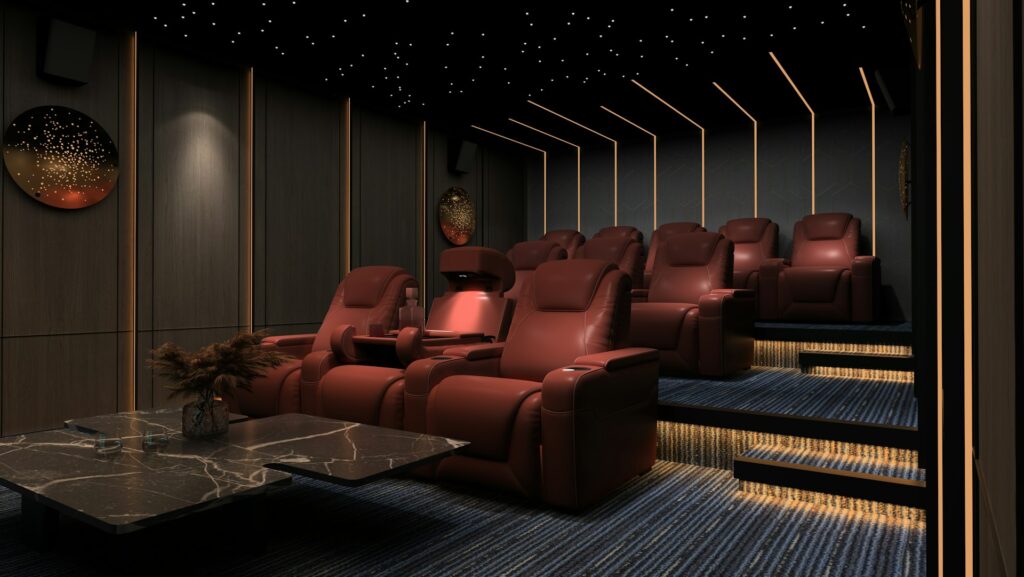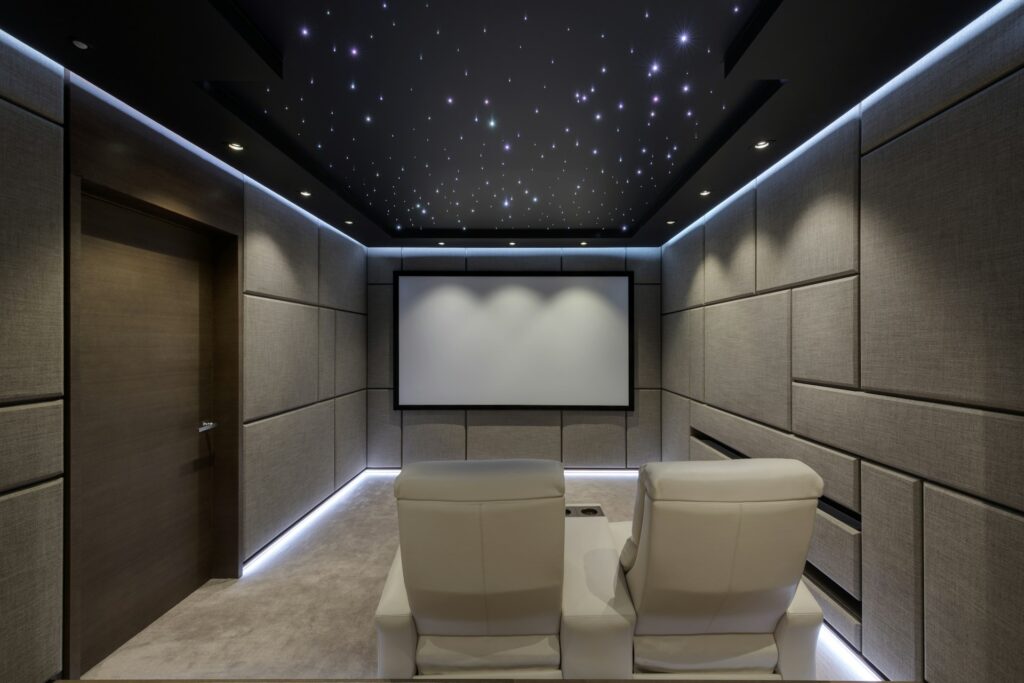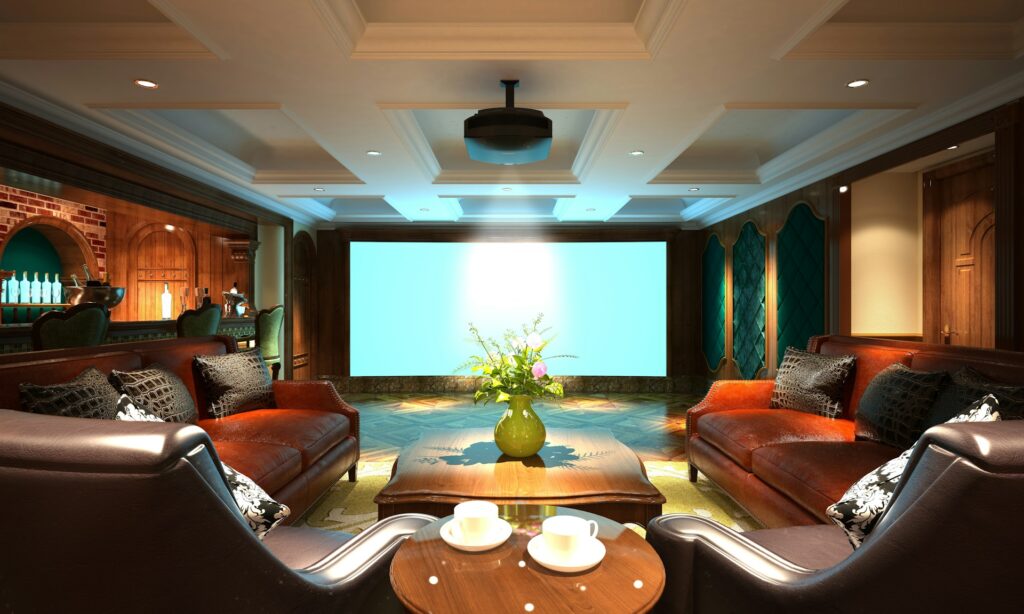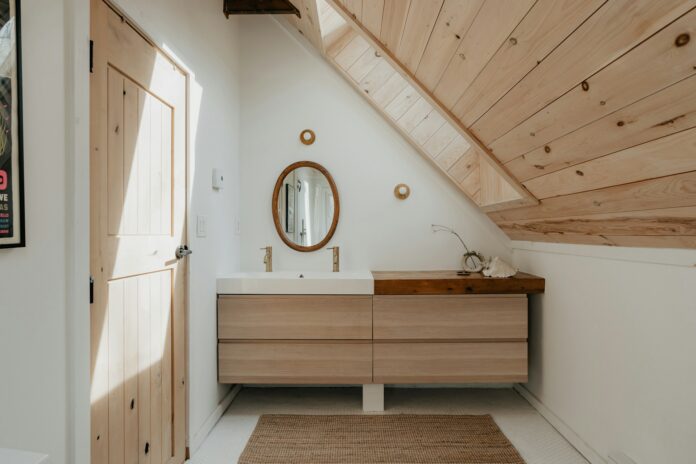Fresh from the final of Euro 2024 and still soaked in beer from watching it in the pub, our minds have turned to our own home viewing set-ups. And, more importantly, how might we enjoy the perks of the big screen without having to share it with a whole pub or cinema full of people?
Technology moves at an astounding pace; you only have to look at the latest consumer gadgets, from the latest 75-inch TVs to surround sound systems that give your brain a bath, to see it in action. It seems that something newer, shinier, and better comes along every year to make the previous model redundant.
And never has this been truer than when considering home entertainment options. Where once we might have been satisfied with decamping to the garden, hooking up a bedsheet to a washing line and projecting a VHS onto it, now only the latest tech and crispest picture and most immersive sound will do.
If you’re wondering how easy it is to build your own cinema at home, then today we’re exploring the tech involved.
But Why?
A home cinema is a great way to unwind after a long day, offering an immersive, sometimes meditative experience and providing the finest escapism that can be found from your sofa (or, you know, a specially designed reclining chair).

First Consider The A Part Of A/V
Sound is one of the most criminally overlooked aspects of the home cinema experience. As cinema is first and foremost a visual medium, the majority tend to put their focus on getting the most expensive, best-looking screen possible at the cost of all else.
However, this is a massive mistake, and to prove it, you simply need to watch a film using the lowest quality earphones you have lying around (you know, those white ones you got free with your latest smartphone). Once you’ve tried this, you will genuinely appreciate how essential great sound is for the full and immersive viewing experience.
There’s a wide range of different types of audio equipment that you can use when building your own home cinema, with speakers perhaps the most critical aspect of any home cinema. That said, for maximum effect they should be matched with their corresponding subwoofer, so they can provide a high-quality sound experience. Speakers come in two types:
- Active
- Passive
Passive speakers don’t require an external power source, while active speakers do. Active speakers typically have better sound quality, but they need more power than passive ones to perform well.

Go further and consider the placement of additional speakers around the room to really create that surround sound atmosphere. Though the quality of speakers is important, sure, their positioning will have just as much of an impact.
There are two main options: 5.1 surround sound, where you’ll need five additional speakers spread out around the room, and 2.1 surround, which calls for just two. In a more compact home cinema, two speakers should be fine but in a larger space dedicated completely to film watching, a 5:1 will feel more maximalist and cinematic. And that’s why you’re here, right?
Alternatively, a soundbar does a similarly good job of projecting music around the room in an immersive way, should your budget be a little tighter.
Soundproofing
Achieving optimal sound quality in your home cinema involves more than just selecting the right speakers; acoustic treatments are essential. Acoustic panels on the walls and ceiling absorb sound waves and reduce reflections, improving sound clarity. Bass traps, placed in the corners, target low-frequency sound waves to provide a tighter and more accurate bass response. Diffusers scatter sound waves to create a more natural and immersive sound field, enhancing the overall audio experience.

Adding carpeting or rugs helps absorb sound and reduce reflections from hard surfaces, while soft furnishings like curtains and cushions contribute to better sound absorption. For soundproofing, consider adding mass-loaded vinyl to walls, installing solid-core doors, and sealing gaps with acoustic caulk to prevent sound from leaking out and blocking external noise.
By addressing these lighting and acoustic considerations, you can create a home cinema environment that rivals a commercial theatre.
Now Move On To The V Part
Now that you have been lectured on the importance of high-fidelity sound, it is safe to move on to the visual aspect of a home cinema. In essence, you have two choices here:
- Projector
- Screen
Projector
A projector will give you the largest image available but can come at a price. You also have several options to choose from, including:
- DLP: A DLP projector is a particular type of projector that uses digital light processing (DLP) technology to create an image.
- LCD: A liquid crystal display (LCD) projector is a type of projector that displays images, data, or video. Because LCD projectors are cheaper to produce and have excellent color reproduction, they tend to be more popular than other alternatives.
- LED: An LED projector is distinguished from other types by using LEDs instead of incandescent lamps to provide light.
- Laser: Among other advantages, laser projectors have better brightness uniformity and lower brightness decline over their lifetimes than other options. Lasers also happen to be the most advanced type, so if you want to future-proof your system, a laser one may be the best choice.

Screen
If a projector sounds like too much hassle, your other option is a standard screen. They can range in size and quality, with the top-of-the-line models being up to 105 inches diagonal and sporting 8K displays, but you might have to take out a second mortgage for these behemoths! For mere mortals, you can opt for a range of monitors, including:
- LCD: This is the last of the old guard of screens (the other being plasma) and is the most affordable as a result. Nonetheless, it still offers excellent image quality and color reproduction.
- LED: These are superior to LCD models as they function using lots of tiny LEDs. They are brighter and produce richer blacks.
- OLED: This is the latest screen tech and arguably produced the highest contrast images out of the lot. However, they are more expensive and not as bright as LED TVs.
In terms of screen size, a simple rule of thumb to consider is to measure the distance between where you’ll sit and the TV. Then, divide that number by two. The result is the maximum size of screen you should buy. Any larger, and you may not be able to take in the whole screen comfortably.

Getting The Lighting Right
Lighting plays a crucial role in creating the a home cinema, because what’s a real cinema experience if not shrouded in darkness?
To minimise glare and reflections on the screen, consider using blackout curtains or shades to block out natural light. Installing dimmable overhead lights or wall sconces can help you control the light levels in the room. Task lighting, such as LED strip lights along the floor or under seating, provides subtle illumination for activities like reading or navigating the room without disturbing the viewing experience.
Accent lighting, like LED strips behind the screen or spotlights for movie posters, adds a touch of style and highlights specific features. For ultimate convenience, integrating smart lighting allows you to adjust the lighting via a smartphone app or voice commands, creating custom scenes for different types of content.

Room Size
When building your home cinema, you should consider the size of your room and how many people will be watching regularly. The size of your room is vital to consider because it will help you determine the overall dimensions of your home cinema.
The number of people watching is also essential because it determines how many seats or couches you need to comfortably watch a film. You should set it up in such a way that it complements your home rather than take it over.
The Bottom Line
Setting up a home cinema can be a challenge, but by following the tips in this post, you will be more likely to create a great setup. Nevertheless, you have a lot to choose from, but this is all part of the fun for any gadget fanatic!
A home cinema is just one great way to repurpose your basement; check out 4 other ideas for doing that here.




